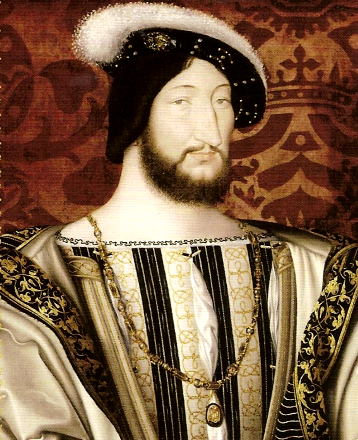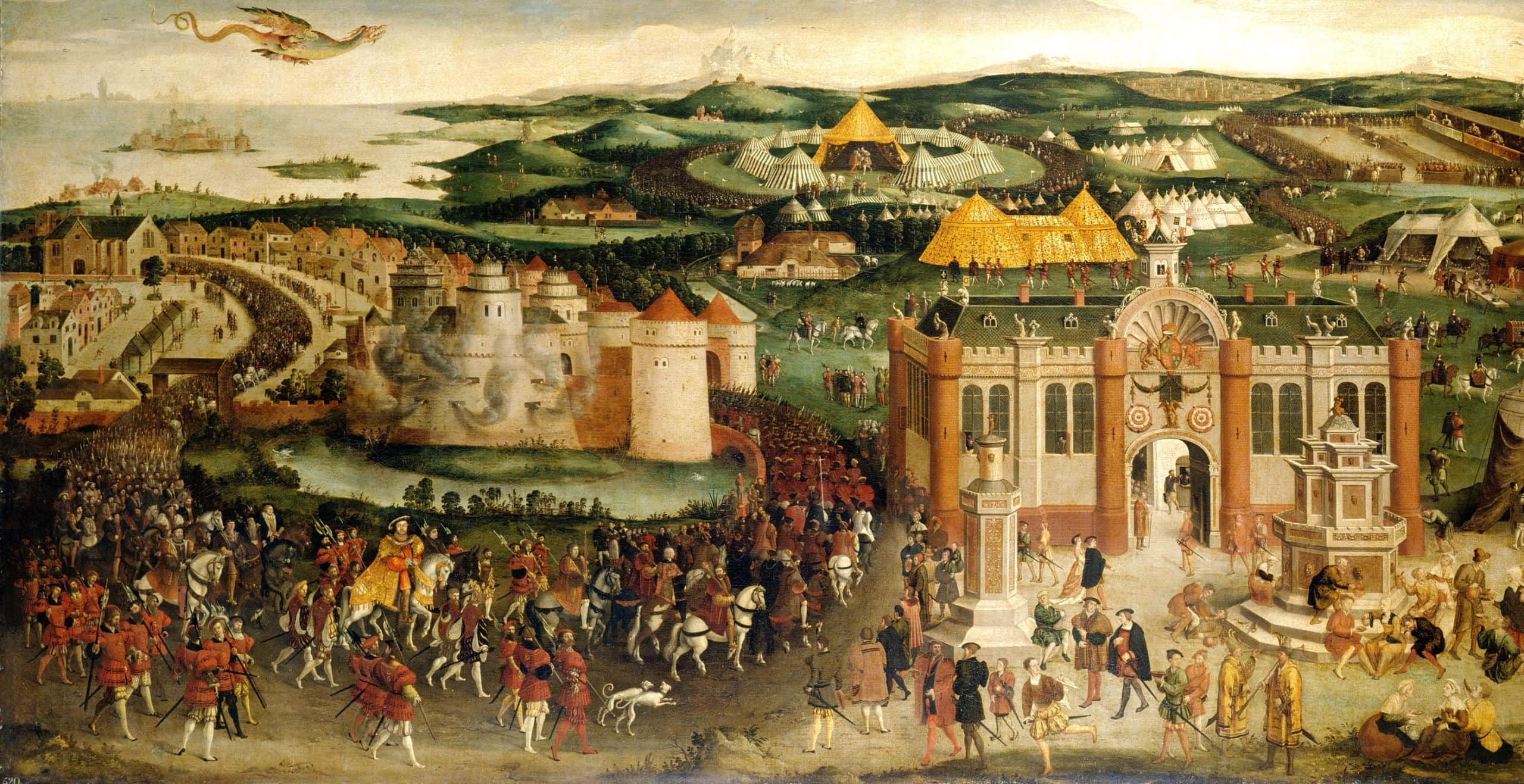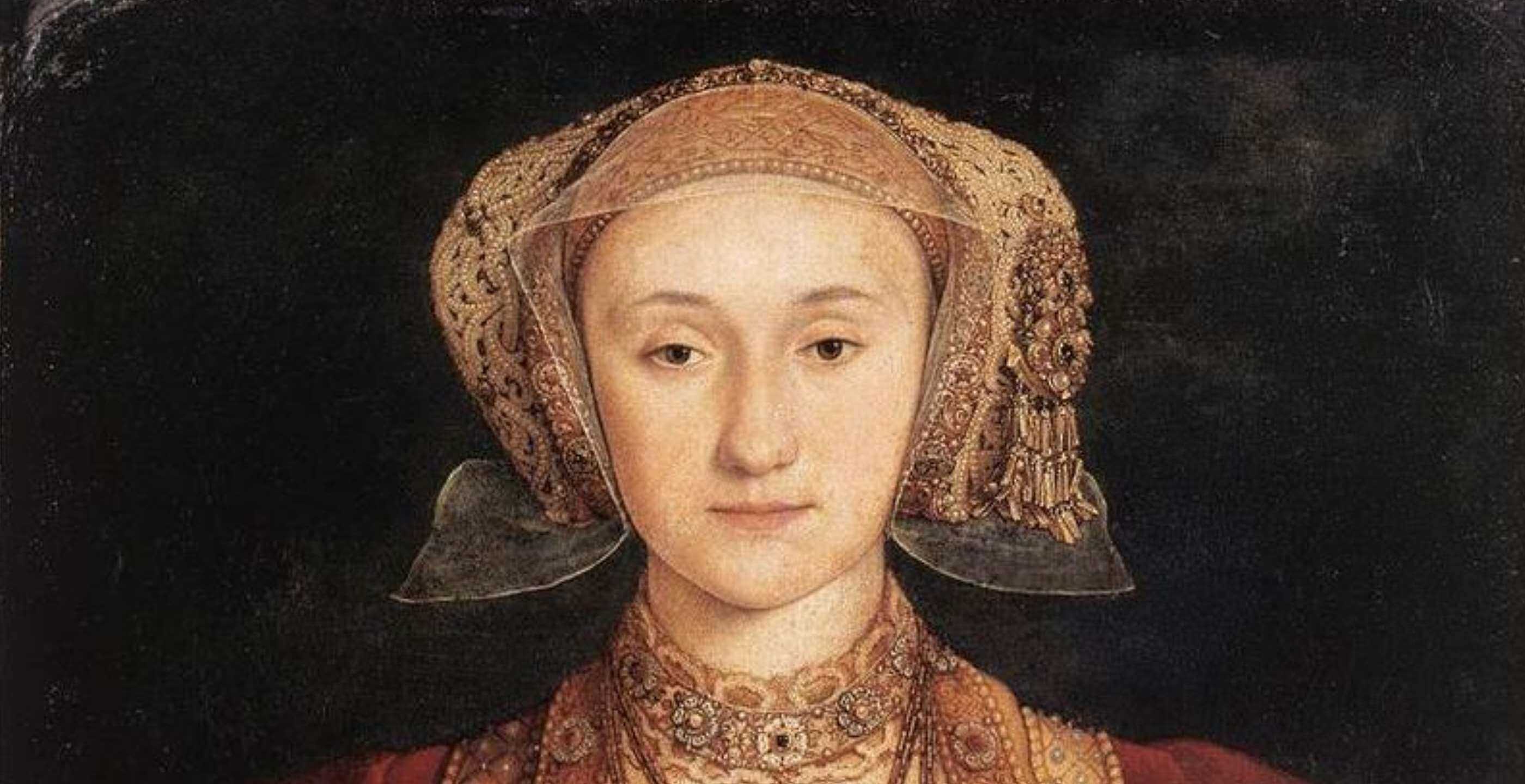On 7th June 1520 the stage was set for a momentous summit between the two great rival nations of France and England.
The occasion became known as the Field of the Cloth of Gold, a meeting which brought together King Henry VIII of England and King Francis I of France in a splendid tournament full of pomp and ceremony, designed to put their differences aside in a quest for lasting peace.

Consisting of eighteen days of celebration, the event took place in a valley very close to Calais, which at the time was in the control of the English. It was here that an array of activities, festivities, religious ceremonies, sports tournaments and feasting took place in opulent tents and banqueting marquees.
Such expense was lavished on the event that the tents and outfits of its participants were adorned with such vast quantities of cloth of gold, a combination of gold and silk, that the meeting was forever referred to as such.
The event was extremely labour-intensive and demanding for those who had to arrange the beautiful settings and lavish catering for the royal retinues, however it remained symbolically crucial.
Such a grand spectacle had a very important message to convey; the special bond between the two nations which had previously been antagonistic and competitive.
The brainchild of this event was the influential Cardinal Thomas Wolsey who had deemed this celebration a necessary step in cultivating good relations between nations, with the prevention of war as the ultimate goal.

England was still in its infancy as a superpower in Europe, with the well-established Habsburg Empire under Charles V and France dominating the international scene. That being said, England was emerging as a potential dominant force in the region and thus required the attention of other nations.
International diplomacy had been at the forefront of many decisions made in the years leading up to the ‘Field of the Cloth of Gold’ event.
Rivalries on the European continent were fractious and delicate, and with vast areas of central Europe under the control of the Holy Roman Emperor, tensions for control and expansion looked set to dominate the coming years.
Individually, the two kings, Henry VIII and Francis I were relatively new on the scene, keen to make an impression and dominate proceedings. Young, competitive and ambitious, they were obvious rivals, so much so that in 1513 Henry VIII had invaded France and fought against Francis and his army.
Unfortunately for Henry VIII, his grand plans were a little over ambitious and in 1515, Francis I became King of France and very quickly asserted his military prowess at the Battle of Marignano. The following peace treaty, co-signed by the Emperor Maximilian I, was a setback for Henry VIII who viewed the new French king as an obstacle to his ambition.
At this moment in European history, the English laid claim to the throne of France. Henry believed he had a right to claim the French throne and if necessary, take it by force.
Against this tense backdrop, important and influential philosophical and advisory figures such as Thomas More, Guillaume Budé and Erasmus were keen to prevent military confrontation, instead seeking to make the argument that the pursuit of peace would adorn the royals with the respect and reputation they so desperately craved.
In 1518, such an opportunity presented itself in the form of the Treaty of Universal Peace/Treaty of London, where European representatives co-signed a pact cementing each respective nation’s commitment to peace. With Thomas Wolsey cleverly orchestrating the move, England under Henry was placed at the helm of peace negotiations.
Moreover, the signing of the pact was just the start; a grand display of peace between Henry and Francis was needed to confirm their alliance and show themselves as Renaissance royals who had chosen peace over war. An eighteen day tournament was planned.
However there were still obstacles in the path of peace, as old rivalries looked hard to break. In 1519, only a year after peace agreements, both Francis and Henry had put themselves forward as the successor to Emperor Maximilian I. Sadly for both, neither were successful and instead the King of Spain, Charles V was chosen instead. Competition, reputation and ambition were still the names of the game, as the Field of the Cloth of Gold in the following year would show.

Scheduled for 1520, the decision was made to set the meeting on the edge of English territory by Calais, in a valley which was landscaped in order to provide the ideal location for the celebrations.
The entire event was meticulously planned in great part by Cardinal Thomas Wolsey from his base at Hampton Court Palace. Plans were drawn up for the construction of areas for tournaments, banqueting and a huge number of tents in which to house both the royal courts.
The construction of a ‘portable palace’ for Henry VIII and his retinue was of paramount importance and required almost 6,000 men to erect such an impressive structure. Made from timber and covered in a canvas material painted to emulate real stone, one could easily be fooled from a distance into thinking it was in fact a palace. There were even fountains placed at the entrance, providing beverages for the king’s guests.

Designed with all the opulence and regal style one would expect from a permanent structure, it even included stained glass. When they saw it, the French named it ‘Crystal Palace’.
Nothing was done by half measures; there was no expense spared and a clear rivalry emerged. Whilst the tents were adorned with fine decoration, the clothing of the guests, thought to be around 10,000 people, was equally opulent with delicate materials and decorated with exquisite gold and jewels.
Given the grandeur of the surroundings, the festivities themselves did not disappoint with great tournaments taking place, including horseback combat and jousting, of which both kings were very keen to participate. To avoid any desire to compete, they chose to be on the same side although, even then, Francis I was said to have been injured in some of the more high-spirited activities.
With eighteen days of entertainment, dining and merriment, the weather did not always comply with outdoor activities, however Henry and Francis did not let this dampen their spirits.

The lavish banquets were accompanied by archery displays and wrestling matches between Breton and Cornish fighters. Moreover, the two young and boisterous royals were naturally drawn to competition once more and in a raucous atmosphere Henry VIII chose to challenge young Francis I to a wrestling match. Losing the match, Henry then challenged Francis to an archery competition.
Whilst the two kings were trying to impress each other with their strength and skill, in the king’s large retinue the women were treated to great banquets, dances and theatre performances.
On 24th June, after many lavish days and nights of celebration, the summit had reached its conclusion and Cardinal Wolsey assembled a great crowd in order to say Mass. At the end of the service, a great awe-inspiring dragon was sent flying through the air. This great kite combined the salamander emblem of Francis I with the Welsh Tudor dragon, and was flown to signify the end of the meeting. All that was left was one further banquet and the exchange of gifts. These expensive tokens included an enamel jewel box given by Francis I to Cardinal Wolsey.
The lavish event seemed to have been a great success. However how long would good relations remain between the two countries? Only time would tell…
In 1521, only a year after the grand event, Europe appeared once again to be in the midst of battle, with Francis I and the Emperor Charles at loggerheads and England embroiled once more. The alliance looked set to crumble and once again peace in Europe looked to be a distant and unattainable dream.
Jessica Brain is a freelance writer specialising in history. Based in Kent and a lover of all things historical.





